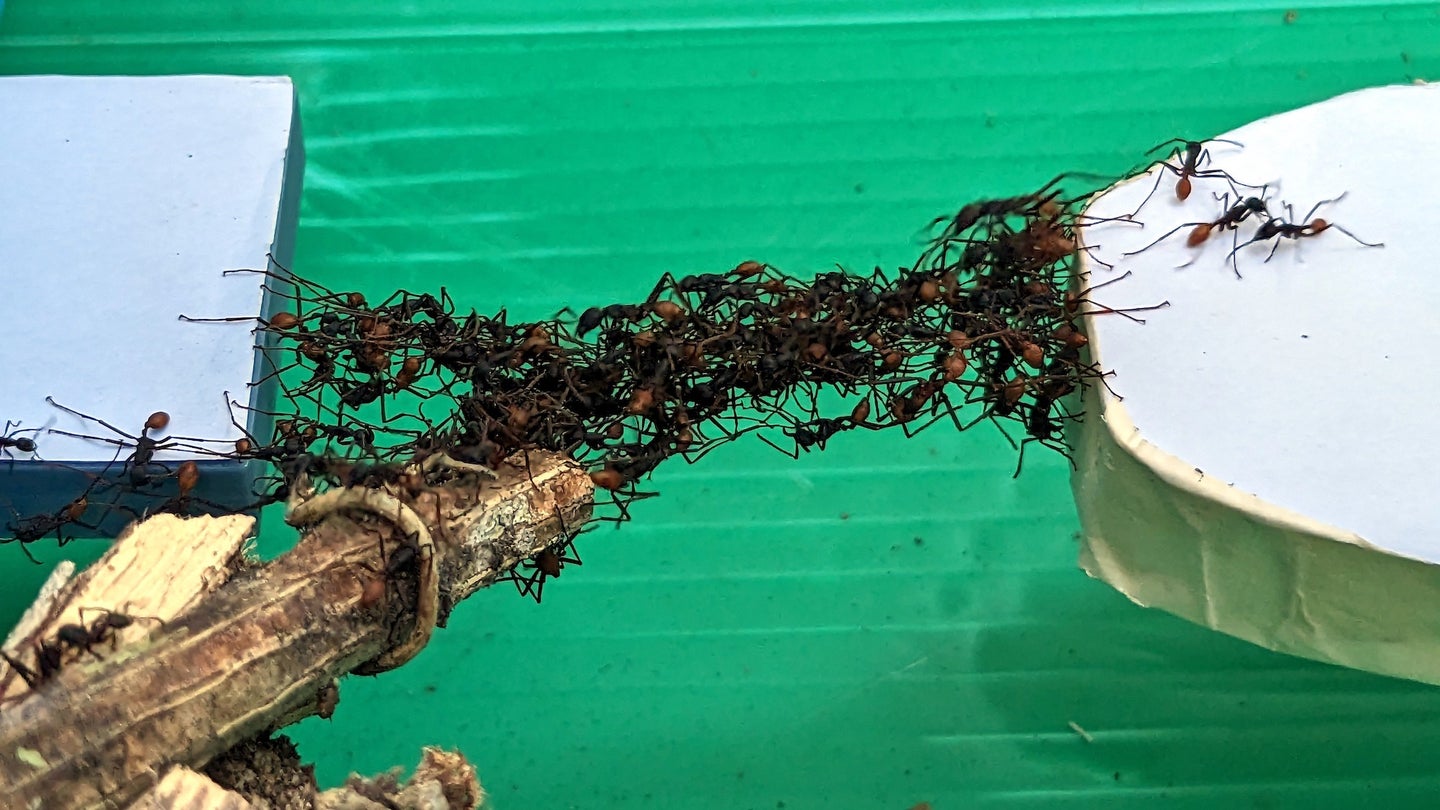Army ants could teach robots a thing or two
Army ants use their bodies to build bridges. Robots could soon take a cue from the tiny insect’s ability to collaborate.

Apart from their nasty stings, army ant colonies are often known for their stunning, intricate architectural feats using their own bodies. When worker ant hunting parties encounter obstacles such as fallen tree branches, gaps in foliage, or small streams, the tiny insects will join forces to create a bridge for the remaining ant brethren to traverse. It’s as impressive as it is somewhat disconcerting—these are living, crawling buildings, after all. But one research team isn’t studying the coordination between miniscule bugs to benefit future construction projects; they are looking into how army ant teamwork could be mimicked by robots.
“Army ants create structures using decentralized collective intelligence processes,” Isabella Muratore, a postdoctoral researcher at the New Jersey Institute of Technology specializing in army ant building techniques, explains to PopSci over email. “This means that each ant follows a set of rules about how to behave based on sensory input and this leads to the creation of architectural forms without the need for any prior planning or commands from a leader.”
[Related: These robots reached a team consensus like a swarm of bees.]
Along with engineers from NJIT and Northwestern University, Muratore and her entomologist colleagues developed a series of tests meant to gauge army ant workers’ reactions and logistical responses to environmental impediments. After placing obstacles in the ants’ forest paths, Muratore filmed and later analyzed the herds’ subsequent adaptations to continue along their routes. Utilizing prior modeling work, the team also tested whether the ant bridges could withstand sudden, small changes in obstacle length using an adjustable spacing device.
Muratore and others recently presented their findings at this year’s annual Entomological Society of America conference. According to their observations, army ants generally choose to construct bridges in the most efficient locations—places wide enough to necessitate a building project while simultaneously using the least number of ants possible. The number of bridges needed during a sojourn also influences the ants’ collective decisions on resource allocation.
David Hu, a Georgia Institute of Technology engineering professor focused on fire ant raft constructions during flooding, recently likened the insects to neurons in one big, creepy-crawly brain while speaking to NPR on the subject. Instead of individual ants determining bridge dimensions and locations, each ant contributes to the decisions in their own small way.
[Related: Robot jellyfish swarms could soon help clean the oceans of plastic.]
Muratore and her collaborators believe an army ant’s collaborative capabilities could soon help engineers program swarms of robots based on the insect’s behavior principles and brains. Ants vary across species, but they still can pack a surprising amount of information within their roughly 1.1 microliter volume brains.
Replicating that brainpower requires relatively low energy costs. Scaling it across a multitude of robots could remain comparatively cheap, while exponentially increasing their functionality. This could allow them to “flexibly adapt to a variety of challenges, such as linking together to form bridges over gaps of different lengths in the most efficient manner possible,” Muratore writes to PopSci.
Robotic teamwork is crucial to implement the machines across a number of industries and scenarios, from outer space exploration, to ocean cleanup projects, to search-and-rescue efforts in areas too dangerous for humans to access. In these instances, coordinating quickly and efficiently not only saves time and energy, it could save lives.